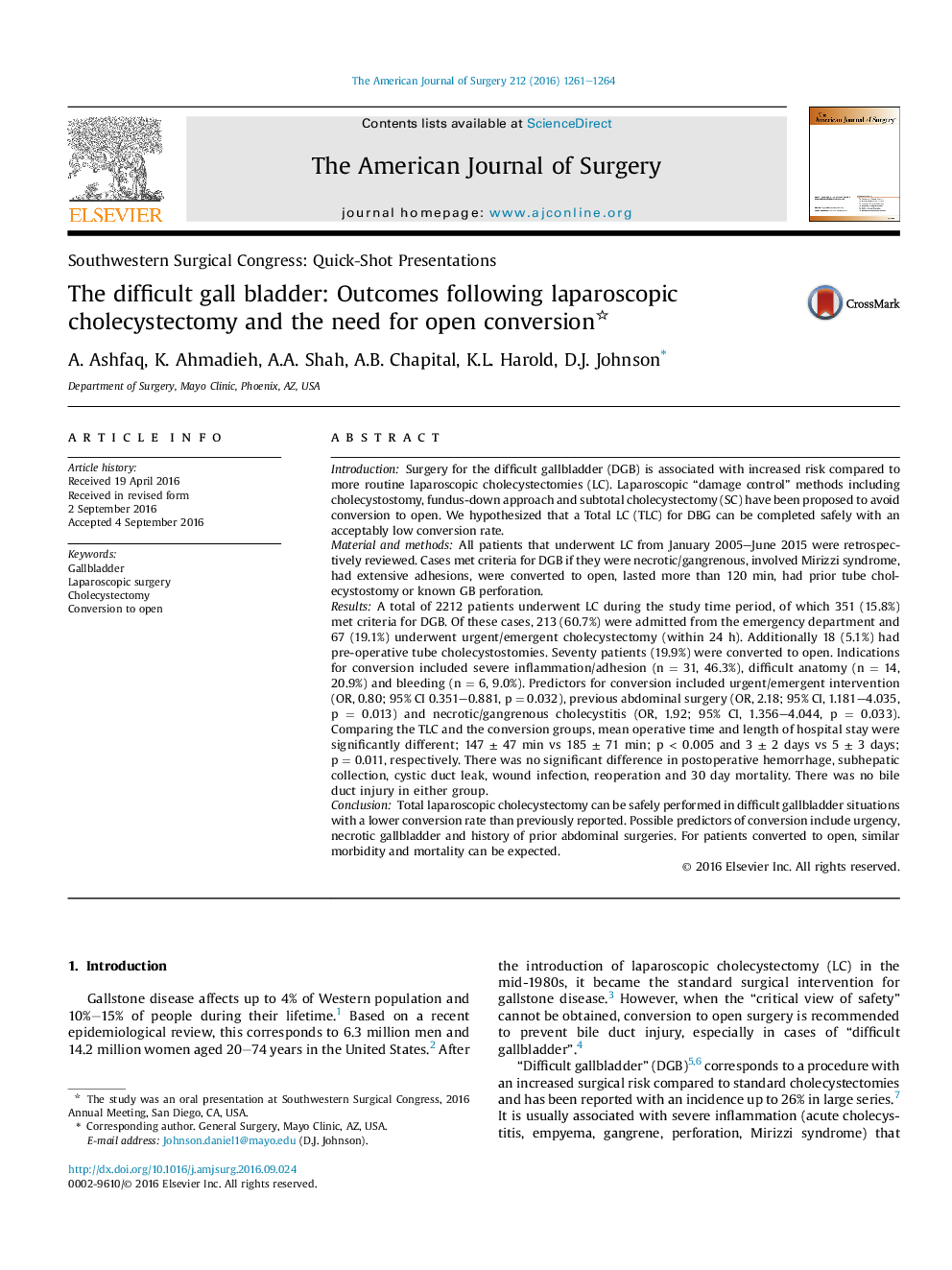| Article ID | Journal | Published Year | Pages | File Type |
|---|---|---|---|---|
| 5731360 | The American Journal of Surgery | 2016 | 4 Pages |
â¢DGB is associated with increased surgical risk compared to standard cholecystectomies.⢓Damage Control” procedures have been proposed to reduce the risk of intraoperative complication.â¢Completion LC can be safely performed in patients with DGB with a lower conversion rate.
IntroductionSurgery for the difficult gallbladder (DGB) is associated with increased risk compared to more routine laparoscopic cholecystectomies (LC). Laparoscopic “damage control” methods including cholecystostomy, fundus-down approach and subtotal cholecystectomy (SC) have been proposed to avoid conversion to open. We hypothesized that a Total LC (TLC) for DBG can be completed safely with an acceptably low conversion rate.Material and methodsAll patients that underwent LC from January 2005-June 2015 were retrospectively reviewed. Cases met criteria for DGB if they were necrotic/gangrenous, involved Mirizzi syndrome, had extensive adhesions, were converted to open, lasted more than 120 min, had prior tube cholecystostomy or known GB perforation.ResultsA total of 2212 patients underwent LC during the study time period, of which 351 (15.8%) met criteria for DGB. Of these cases, 213 (60.7%) were admitted from the emergency department and 67 (19.1%) underwent urgent/emergent cholecystectomy (within 24 h). Additionally 18 (5.1%) had pre-operative tube cholecystostomies. Seventy patients (19.9%) were converted to open. Indications for conversion included severe inflammation/adhesion (n = 31, 46.3%), difficult anatomy (n = 14, 20.9%) and bleeding (n = 6, 9.0%). Predictors for conversion included urgent/emergent intervention (OR, 0.80; 95% CI 0.351-0.881, p = 0.032), previous abdominal surgery (OR, 2.18; 95% CI, 1.181-4.035, p = 0.013) and necrotic/gangrenous cholecystitis (OR, 1.92; 95% CI, 1.356-4.044, p = 0.033). Comparing the TLC and the conversion groups, mean operative time and length of hospital stay were significantly different; 147 ± 47 min vs 185 ± 71 min; p < 0.005 and 3 ± 2 days vs 5 ± 3 days; p = 0.011, respectively. There was no significant difference in postoperative hemorrhage, subhepatic collection, cystic duct leak, wound infection, reoperation and 30 day mortality. There was no bile duct injury in either group.ConclusionTotal laparoscopic cholecystectomy can be safely performed in difficult gallbladder situations with a lower conversion rate than previously reported. Possible predictors of conversion include urgency, necrotic gallbladder and history of prior abdominal surgeries. For patients converted to open, similar morbidity and mortality can be expected.
